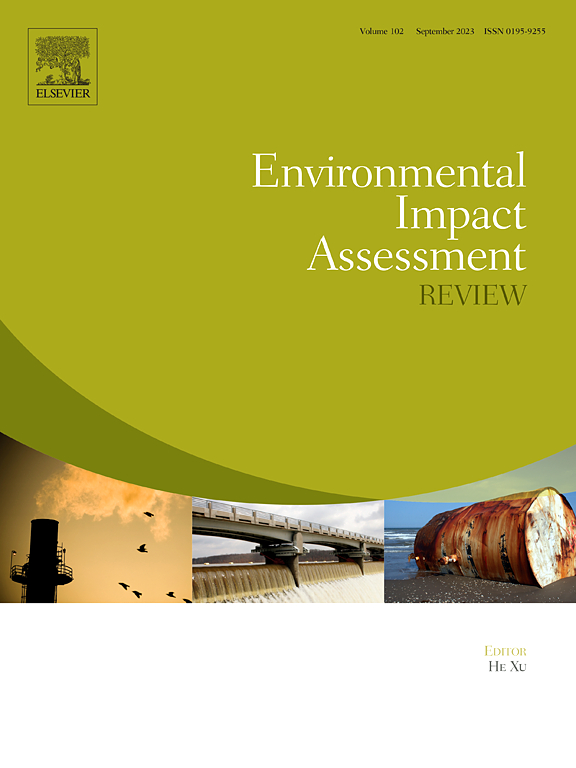To uncover economic losses and mitigation benefits of agricultural water scarcity by considering water availability, quality, and efficiency in China's largest dryland River Basin
IF 9.8
1区 社会学
Q1 ENVIRONMENTAL STUDIES
引用次数: 0
Abstract
Water scarcity constrains agricultural production and leads to significant economic losses. However, existing water scarcity risk (WSR) assessments often overlook the combined effects of water availability, quality, and efficiency, as well as potential mitigation benefits. This study develops an integrated assessment framework that incorporates these factors to evaluate agricultural WSR in the Yellow River Basin, a critical grain-producing region in China. The framework quantifies both direct economic losses in agriculture and indirect impacts on non-agricultural sectors through intercity trade, while also estimating mitigation benefits. Results show that insufficient water quality significantly amplifies economic losses, reaching 1189.9 billion CNY, compared to 391.0 billion CNY when only water quantity is considered. Key supply chain sectors, including food and tobacco processing, chemicals, and textiles, account for 56.6 % of total indirect agricultural WSR exports. Among mitigation measures, improving water quality and water-use efficiency reduces economic losses by 72.5 billion CNY and 53.2 billion CNY, respectively. Meanwhile, utilizing mine water in coal-rich regions and reclaimed water in urban centers can significantly reduce economic losses, with Ordos and Qingdao experiencing reductions of 75.4 % and 39.1 %, respectively. This framework provides a comprehensive approach to agricultural water management, integrating economic loss estimation with mitigation benefits to support sustainable water resource management.
通过考虑中国最大的旱地河流流域的水量、水质和水效,揭示农业缺水的经济损失和缓解效益
本文章由计算机程序翻译,如有差异,请以英文原文为准。
求助全文
约1分钟内获得全文
求助全文
来源期刊

Environmental Impact Assessment Review
ENVIRONMENTAL STUDIES-
CiteScore
12.60
自引率
10.10%
发文量
200
审稿时长
33 days
期刊介绍:
Environmental Impact Assessment Review is an interdisciplinary journal that serves a global audience of practitioners, policymakers, and academics involved in assessing the environmental impact of policies, projects, processes, and products. The journal focuses on innovative theory and practice in environmental impact assessment (EIA). Papers are expected to present innovative ideas, be topical, and coherent. The journal emphasizes concepts, methods, techniques, approaches, and systems related to EIA theory and practice.
 求助内容:
求助内容: 应助结果提醒方式:
应助结果提醒方式:


